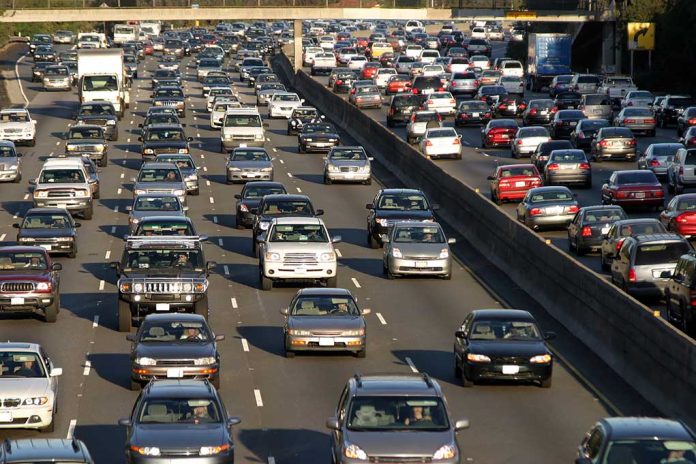
San Francisco’s new speed camera program implements an income-based fine system, raising questions about fairness in traffic enforcement as the city rolls out California’s first fixed-speed cameras.
Key Takeaways
- San Francisco has installed 33 speed cameras across the city, primarily in school zones and high-injury corridors, making it the first California city to implement such a system.
- The program features a controversial “equity” component with fines ranging from $50 to $500, but offering discounts of up to 80% for low-income residents.
- After a two-month grace period ends, the San Francisco Municipal Transportation Agency could issue up to 42,000 citations daily, potentially generating significant revenue.
- Los Angeles plans to implement a similar speed camera program in 2026, suggesting expansion of this approach throughout California.
- Proponents claim the cameras will reduce crashes and fatalities, while critics question the fairness of income-based penalties for identical violations.
California’s First Fixed-Speed Camera Program Launches
San Francisco has become the first city in California to deploy fixed-speed cameras, installing 33 devices across strategic locations including school zones and high-injury corridors. The program follows the passage of AB 645, allowing the implementation of automated speed enforcement in the city. The initiative received backing from California Governor Gavin Newsom and is primarily intended to reduce traffic-related crashes and injuries. Currently, the cameras are in a two-month grace period where violators receive warnings rather than actual fines.
🚨 INSANE: California is officially launching its Speed Safety System Pilot Program, which will issue speeding tickets based on your income bracket.
pic.twitter.com/8dXXn3jxkA— Proud Elephant 🇺🇸🦅 (@ProudElephantUS) April 1, 2025
The San Francisco Municipal Transportation Agency (SFMTA) has placed warning signs at intersections with speed cameras to alert drivers about the new enforcement technology. After the grace period ends, the agency could potentially issue up to 42,000 citations daily, representing a significant change in traffic enforcement methodology. The program’s implementation follows years of advocacy from safety groups concerned about pedestrian fatalities and injuries on San Francisco streets.
Controversial “Equity” Fine Structure Raises Eyebrows
The program’s fine structure has generated considerable attention, particularly its income-based approach to penalties. Standard fines start at $50 for driving 11-15 mph over the speed limit and escalate to $100 for 16-25 mph over, $200 for 26+ mph over, and $500 for driving 100 mph or more. However, the program includes significant discounts for low-income drivers, with reductions of up to 80% available for those who qualify based on participation in programs like SNAP, CalWORKS, Medi-Cal, CAPI, or IHSS.
Unlike traditional speeding tickets, violations caught by these cameras result in civil penalties rather than points on a driver’s license. Income thresholds for discounts are adjusted based on household size, with different rates available for those who qualify as low-income or recipients of public assistance. This approach has sparked debate about whether traffic laws should be enforced differently based on a violator’s financial status, with critics arguing that identical violations should carry identical penalties regardless of income.
Potential Safety Benefits and Expansion Plans
Supporters of the program, including local advocacy group Walk SF, point to evidence from other cities suggesting automated speed enforcement can significantly reduce dangerous driving behaviors. The technology is expected to address a critical safety issue in San Francisco, where speeding has been identified as a major factor in serious injuries and fatalities on city streets. The cameras are strategically placed in areas with documented safety concerns to maximize their effectiveness in reducing collisions.
San Francisco’s initiative appears to be just the beginning of a broader trend in California. Los Angeles has already announced plans to implement a similar automated speed enforcement program in 2026. The expansion suggests that state authorities see value in this technological approach to traffic enforcement despite the controversies surrounding the equity-based fine structure. As the pilot program in San Francisco progresses, other California municipalities will likely be watching closely to evaluate both the safety outcomes and public response before implementing their own versions.
Sources:
SF Launches California’s First Fixed Speed Cameras, Fines Scaled By Income
SF Launches “Equity” Speed Cameras, Punishing Drivers By Income



